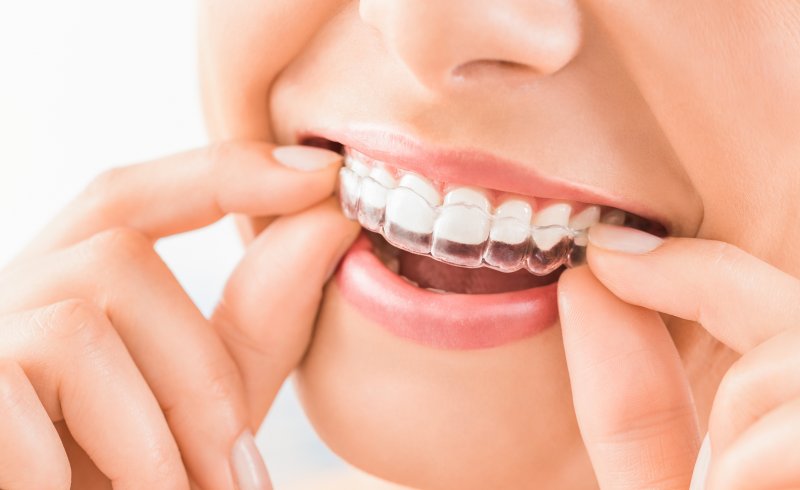
Bite alignment issues like overbites, underbites, and crossbites are common oral health problems that can lead to issues like tooth decay, dental injuries, TMJ disorders, and even headaches, backaches, or neck pain. While traditional braces have effectively treated these issues for years, in many cases Invisalign can do so using removable and virtually invisible clear aligners without any dietary restrictions. Here’s a brief overview of how Invisalign works.
How Does Invisalign Work?
After your dentist measures your teeth with the digital Itero system and designs your treatment plan, a customized sequence of clear aligners will be manufactured for you. Each set of aligners is designed to pick up where the last one left off and will apply pressure to your teeth to shift them into better alignments. You’ll need to wear your aligners for at least twenty hours every day, remove them when performing oral hygiene or eating or drinking anything but water, and thoroughly clean them and your teeth before replacing them. Treatment can take between six and eighteen months.
Which Orthodontic Issues Can Invisalign Treat?
Invisalign can treat a range of alignment issues, but especially severe cases may require treatment with traditional braces. Invisalign treatment can address problems like:
- Crooked teeth: Teeth that don’t stand up properly can be visually displeasing and harder to clean.
- Overbite: If the top teeth protrude too far over the bottom teeth, it can make it difficult to eat some foods.
- Underbite: When the bottom teeth overlap the top teeth, the enamel may wear down more quickly and the patient may have speech difficulties.
- Crossbite: If a few upper teeth rest inside the lower teeth instead of outside, the teeth may become chipped and worn and the gums may recede.
- Spacing issues: Food can become trapped in gaps between teeth, which can lead to pain or gum disease. Many people also find their gaps to be unsightly.
- Open bite: If the top and bottom teeth do not meet when the mouth is closed, it can be harder to eat certain foods.
- Crowded teeth: If your teeth overlap each other, they can be harder to clean and easier to injure, making them more vulnerable to oral infections.
Treating these issues with Invisalign can realign teeth in a faster and more comfortable way than traditional braces, allowing you to enjoy a healthier, prettier, and more functional smile. Consulting with your dentist can determine if Invisalign can be the right course of action for you.
About the Author
Dr. Ashley Civetti earned her Doctor of Dental Surgery degree at the University of Texas Health Center School of Dentistry at Houston, where she graduated with Omicron Kappa Upsilon Honors. She is proud to be a member of the American Dental Association, the Florida Dental Association, and the Academy of General Dentistry. Her office in Royal Palm Beach, FL, offers general, restorative, cosmetic, and emergency dentistry as well as Invisalign services. To schedule an Invisalign consultation, contact her online or dial (561) 798-4200.
